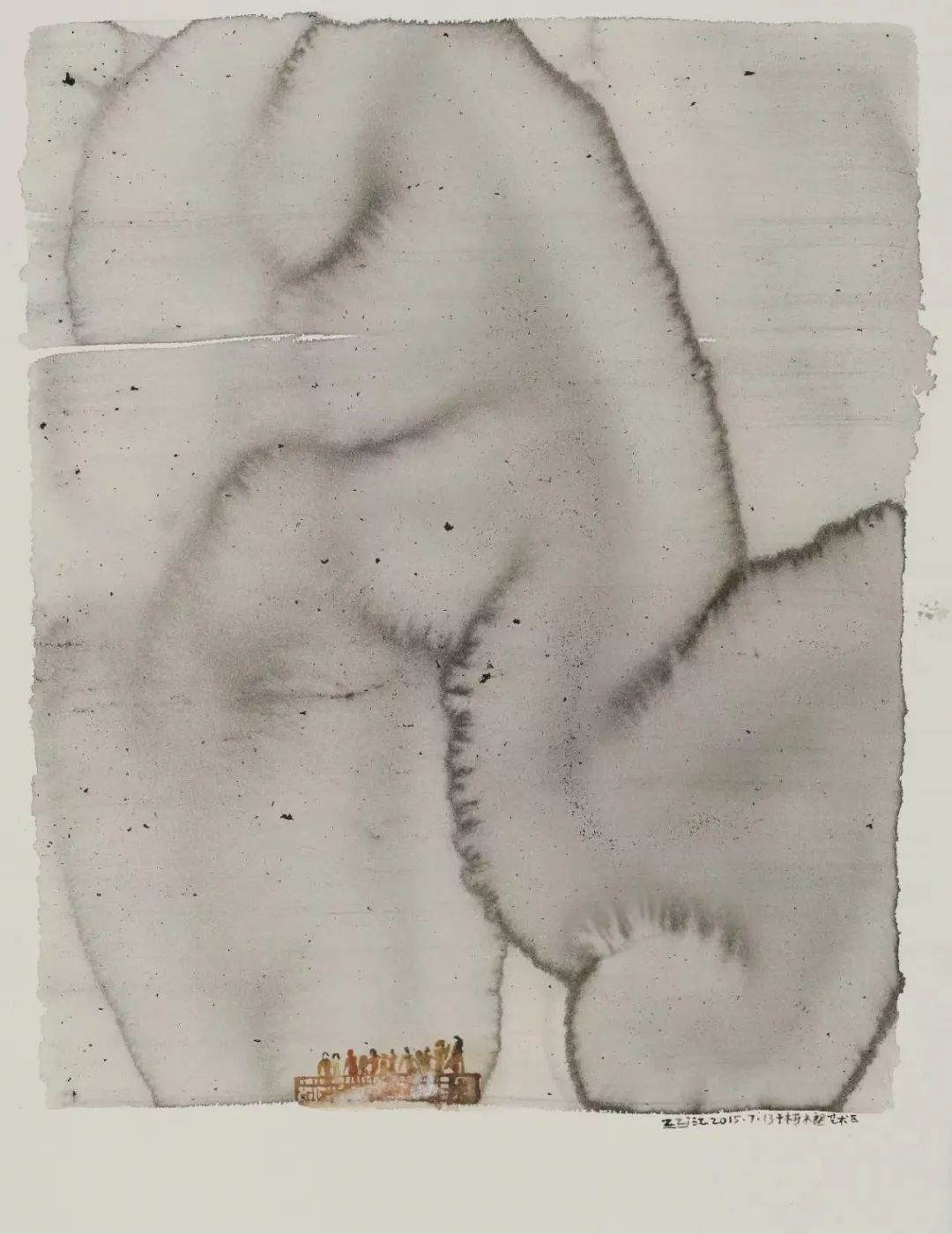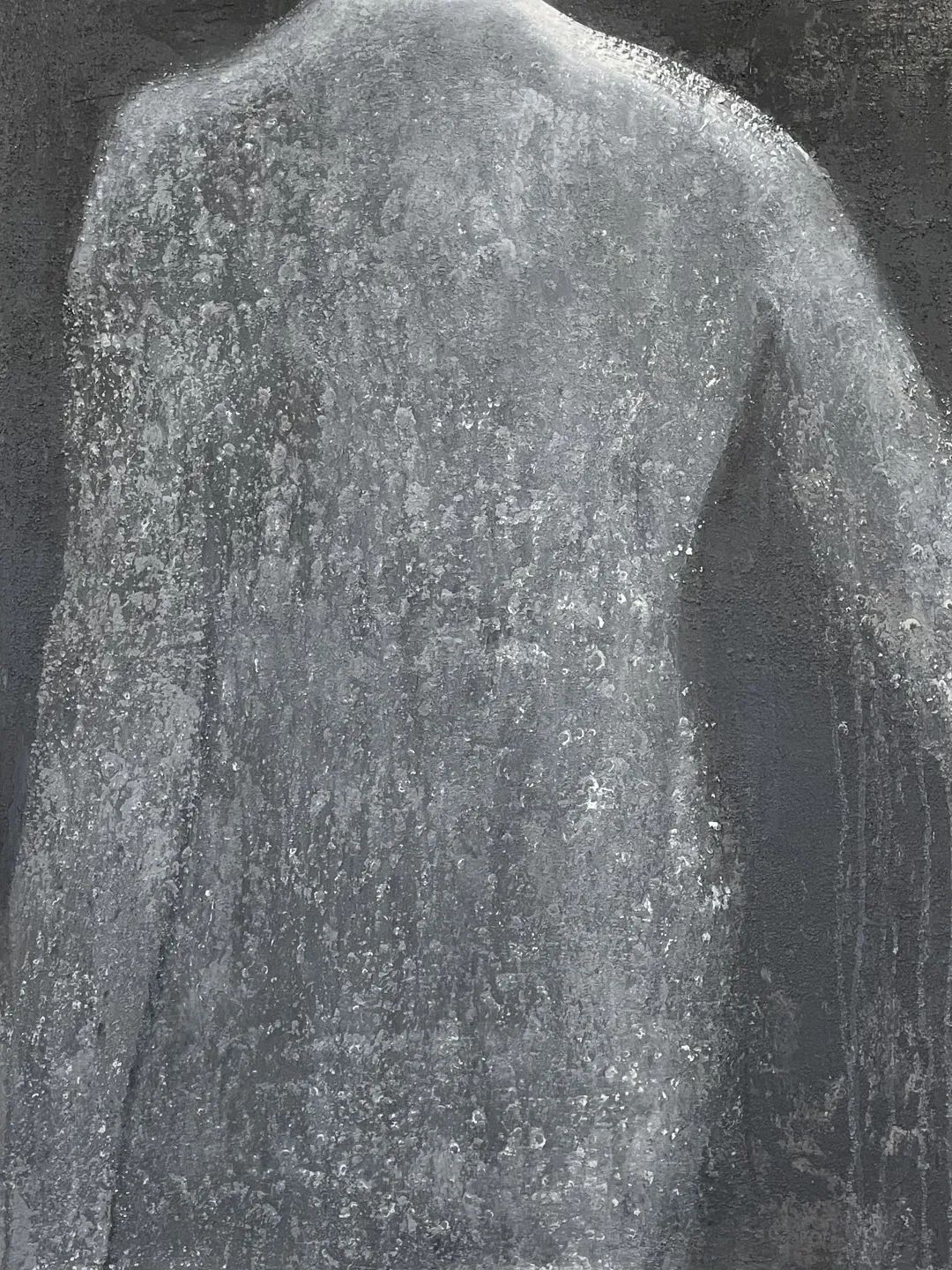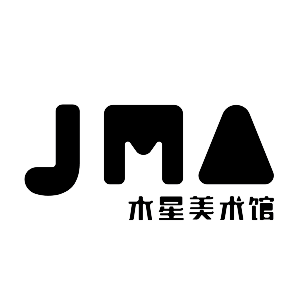2022 年 12 月 20 日至 2023 年 2 月 19 日,木星美术馆将呈现《视界·是界》,展出广州美术学院水彩画系水性材料与跨界拓展工作室(第四工作室)师生的作品。展览通过呈现艺术家以水性材料为媒介的跨界探索成果,为观众提供感知艺术的新视角,展览将免费对公众开放。
文/刘叶子
视觉的呈现与接收是个循环往复的过程,初见的图像或景致往往会带来视觉上的冲动,令人想多花时间看个明白。在这个图像信息冗杂且繁复的时代,当过度媒介化的图像使每一次初见的新鲜沦为寻常时,文化的进程对视觉艺术所带来的能量维度,便有了更深层次的追求和期待。

《天底下1》
79×54cm/纸本水彩/张振江/2015
美术学院是部分青年人踏上创作的起点,是寻找、学习创作方法的开端,是在思维震荡中衍生新艺术面貌的母体。本次展览邀请到广州美术学院水彩画系水性材料与跨界拓展工作室(第四工作室)的师生参与。广州美术学院水彩画系有着清晰的传统学院脉络,以王肇民教授为引领,一批批优秀的水彩画家兼容并蓄、开拓行进,广美水彩也在 40 年积淀之下有了更加完整和宽容的学院体系。水彩第四工作室(下文简称四工)由原第二工作室发展成立,“水性综合与跨界拓展”是其研究探索的主要内容,以“水”为媒的材料研究扩充了其除传统架上水彩技法的探索边界,增加了艺术作品的呈现与感知形式。
综上,为了更加全面立体的呈现展览以让观众可用更多维视角观看并链接作品内容与自身的关系。展览围绕“视界”分成了三个单元,分别是:“抽象的物质视界”、“有序的符号视界”及“触手可及”的当代视界。在作品归类时并非按照传统意义上的题材、创作时间、创作地域或媒介而分,而是通过较为感性地与作品“对话”之后按照作品所冲撞出的立意、内容维度,及渗透出的情绪形象来划分。只有突破视觉界限的分类方法,才能提炼与假设出更为凝聚甚至尖锐的艺术语言。同时,展览的空间展陈设计也充分贴合本次展览打破“视界”分类界限的意图。并用一个“邀请”的动作使观者主动环绕穿梭在这个表象无序实则有序的艺术森林,在预设好的仰视、平视、俯视几种观看行为的变换中实现观看情绪的转变。展览希望摒弃传统展陈方式以达成和观者的“合作”,更直接地传达隐身于作品背后的故事。作品与观众的同时镜像化则更加拉近了两者物理与心理的双重距离,在这个多重“呈现”的过程中描红展览对话与提问式的寻觅之旅——最终解开如何脱离观察所要描绘对象的既往惯性制约、如何单纯的回到艺术发现与新观念的创造中、如何在脱离架上的选择中驻扎更为合理的现代因子谜题。带着这些问题,四工将打开与普世认知下不太一样的学院艺术新视界。

《天底下1》
79×54cm/纸本水彩/张振江/2015
展览中第二个“界”是关于艺术家身份的自我检索和自我梳理。在脱离学院进入社会工作的过程中,艺术家们经历着地理和心理的双重迁徙,他们尝试以“录像倒带”的方式回放自己那首还未成熟的“art demo”时或许会有新的发现与动力。面对来自自身的提示,不管是在何种封闭的空间都可以展开无限的思考,时间——界定的人生站点,身份——界定的生活内容,认知——界定的创作办法,诸如此类的“界定”都会在持续的行进与思考中不攻自破。只有在不断地尝试下才可能打破伪创作的僵局。随着浸泡在同一环境时间的拉长,我们和环境逐渐被拉近为“微距离”,这种微距离使我们看不清所处环境与自身的关系,与艺术的关系亦然。以时间为距离,退远观察,对于过往的记忆触点所形成的抽象感知所唤回的不是过去,而是如今的状态及对价值观的影响。那么不论过去还是未来我们都将有理由相信艺术创作的“界”不会规范于某种空间场域,更不会停滞在某些心理定式里。生活的痕迹,猝然而来的阅历,都会在思考中无意生产和发酵,如果还可以用艺术的言语变现,那么这才是学院背景下的我们所应发挥的能量。
《视界·是界》所引发的视觉的“界”与身份的“界”,两个维度的“界”都是在学院艺术背景下引发的探讨。旨在以微观的切口带领观众重新认识学院教育的力量和宽度,在更为广阔的图景下给予社会大众更多亲昵的动作,帮助观众了解,当代艺术的语言既是艺术家对时代症候带有私人痕迹的独白,亦是人本关怀下公众的和声。
关于展厅
本次展览空间设计上不是物理意义上的堆砌与累积,如何通过空间设计去表达、叙述展览对象的愿景与故事,是设计过程中一直思考的问题。为了更加全面立体地呈现展览以让观众可用更多维视角观看并链接自身与作品内容的关系,空间展陈贴合本次展览,利用“斜杠·突破”、“镜面·延伸”打破视界分类秩序的意图。
展览利用“斜杠”这一潜在的指引“邀请”观者主动环绕穿梭在艺术森林中,通过观看行为的变换实现观者观看情绪的转变,使他们能够更直观的接收隐于作品背后的故事。“镜面”的世界延续了水彩艺术家的探索之路。
关于策展人
刘叶子,1992 年生于中国河北。2018 毕业于广州美术学院水彩画创作研究方向,获硕士学位,师从蔡伟国教授。2020 至今吞武里大学艺术管理专业博士在读。现生活于深圳,主要代表作《异帘忧梦之二》等。
展览信息
时间
2022.12.20-2023.02.19
地点
木星美术馆
深圳市福田区蓝花道 6 号艺术中心
主办方
广州美术学院绘画艺术学院水彩画系
深圳市木星美术馆
协办方
深圳市艺术视野文化传播有限公司
Author| Yezi Liu
Visual presentation and reception are a circular process. The first image or scene often brings visual impulse, which makes people want to spend more time seeing it. In this era of jumbled and complicated image information, when the over-media image makes every novelty ordinary, the process of culture has a deeper pursuit and expectation for the energy dimension brought by visual art.
The Academy of Fine Arts is the starting point for some young people to set foot on the creation, the beginning of looking for and learning creative methods, and the matrix of new artistic outlooks derived from the shock of thinking. This exhibition will invite teachers and students from the Studio of Water-based Materials and Cross-border Development (Studio 4) Department of Watercolor Painting of Guangzhou Academy of Fine Arts. The Watercolor Painting Department of Guangzhou Academy of Fine Arts has a clear traditional academy context. Under the guidance of Professor Wang Zhaomin, batches of excellent watercolour painters have been tolerant and pioneering. Guangmei Watercolor has also developed a more complete and passive academy system after 40 years of accumulation. Watercolor Studio No. 4 (now called "Si Gong") was established from the former No. 2 studio. "Water-based synthesis and cross-border development" is the main content of its research and exploration.
To sum up, to present the exhibition more comprehensively and three-dimensionally, the audience can view the works from a more multi-dimensional perspective and link the relationship between them and themselves. Around "horizon", the exhibition is divided into three units: "abstract material horizon", "ordered symbolic horizon," and "accessible contemporary horizon". The classification of works is based on the theme, creation time, creation region or media in the traditional sense but on the idea, content dimension and moving image penetrated by the works after a more emotional "dialogue" with the results. By breaking through the visual boundary classification method, we can only extract and assume a more cohesive or even sharp artistic language. At the same time, the spatial design of the exhibition also entirely fits the intention of the show to break the classification boundary of "visual horizon". With an "invitation" action, the audience actively shuttles around this art forest with a disorder in appearance but orderliness in fact and realizes the transformation of viewing emotions in the preset change of viewing behaviours of looking up, looking down and looking down. The exhibition hopes to abandon traditional methods to achieve "cooperation" with viewers and more directly convey the hidden stories behind the works. The simultaneous mirroring between the results and the audience further Narrows the physical and psychological distance between the two. This process of several "presentations" depicts the exhibition's conversation-questioning journey, eventually solving the riddle of how to get away from the habitual limits of the objects to be presented, how to return to the discovery of art and the production of new ideas. And how to station more reasonable modern factors in removing the shelf. With these problems, Sigong will open a new vision of college art different from everyday cognition.
The second "realm" in the exhibition is about the self-searching and self-combing of the artist's identity. While leaving college and entering social work, artists experience the dual migration of geography and psychology. They may have discoveries and motivation when they try to play back their immature "art demo" through "video rewind". In the face of the prompt from oneself, no matter in what kind of enclosed space can be infinite thinking, time-defined life site, identity-defined life content, or cognition-defined creation method. We will break such "definition" in the continuous progress and review.
Only through constant attempts can the deadlock of fake creation be broken. As we soak in the same environment for an extended period, we are gradually narrowed to the "micro distance" with the environment, which makes us unable to see the relationship between the environment and ourselves and the relationship between the art. Taking time as a distance, the abstract perception formed by the memory contact points recalls not the past but the present state and its impact on values. So no matter in the past or the future, we will have reason to believe that the "realm" of artistic creation will not be regulated in some spatial field, let alone stagnant in some mental stereotypes. Traces of life and sudden experience can be unconsciously produced and fermented in thinking. If we can also realize them in the language of art, then this is the energy we should play under the background of the college.
The "boundary" of vision, the "boundary" of identity and the "boundary" of two dimensions triggered by "Vision · Shi Boundary" are both discussed under the background of literary art. The aim is to lead the audience to re-understand the power and width of college education in a micro way, to give more intimate actions to the public in a broader picture. And we aim to help the audience understand that the language of contemporary art is not only the monologue of artists with private traces of the symptoms of The Times but also the harmony of the public under humanistic care.
About the exhibition hall
The design of this exhibition space needs a physical sense of stacking and accumulation. In the design process, artists investigated how to communicate and narrate the exhibition item's vision and story through space design. Present the exhibition in a more comprehensive and three-dimensional way. The audience can view it from a more multi-dimensional perspective and link the relationship between themselves and the content of the works. The space exhibition is suitable for this exhibition, and the intention of breaking the classification order of the horizon by using "slash · breakthrough" and "mirror · extension".
The exhibition uses the "slash" as a potential guide to "invite" the audience to actively shuttle around the art forest through the change of viewing behaviour to achieve the transformation of viewing emotions so that they can more intuitively receive the story behind the work. The world of "mirror" continues the path of exploration of Watercolor artists.
About the curator
Yezi Liu was born in 1992 in Hebei, China. In 2018, she graduated from the Guangzhou Academy of Fine Arts with a master's in Watercolor painting creation and research. She studied under Professor Weiguo CAI, PhD candidate in Arts Management at Thunburi University from 2020 till now. She lives in Shenzhen, and her main work is "The Second One of the Strange Curtain".
Exhibition information
Time
2022.12.20-2023.02.19
Location
Jupiter Museum of Art
No.6 Lanhua Road, Futian District, Shenzhen
Sponsor
Department of Watercolor Painting, School of Painting Art, Guangzhou Academy of Fine Arts
Jupiter Museum of Art
Co-organizer
Shenzhen Art Vision Culture Communication Co., LTD

